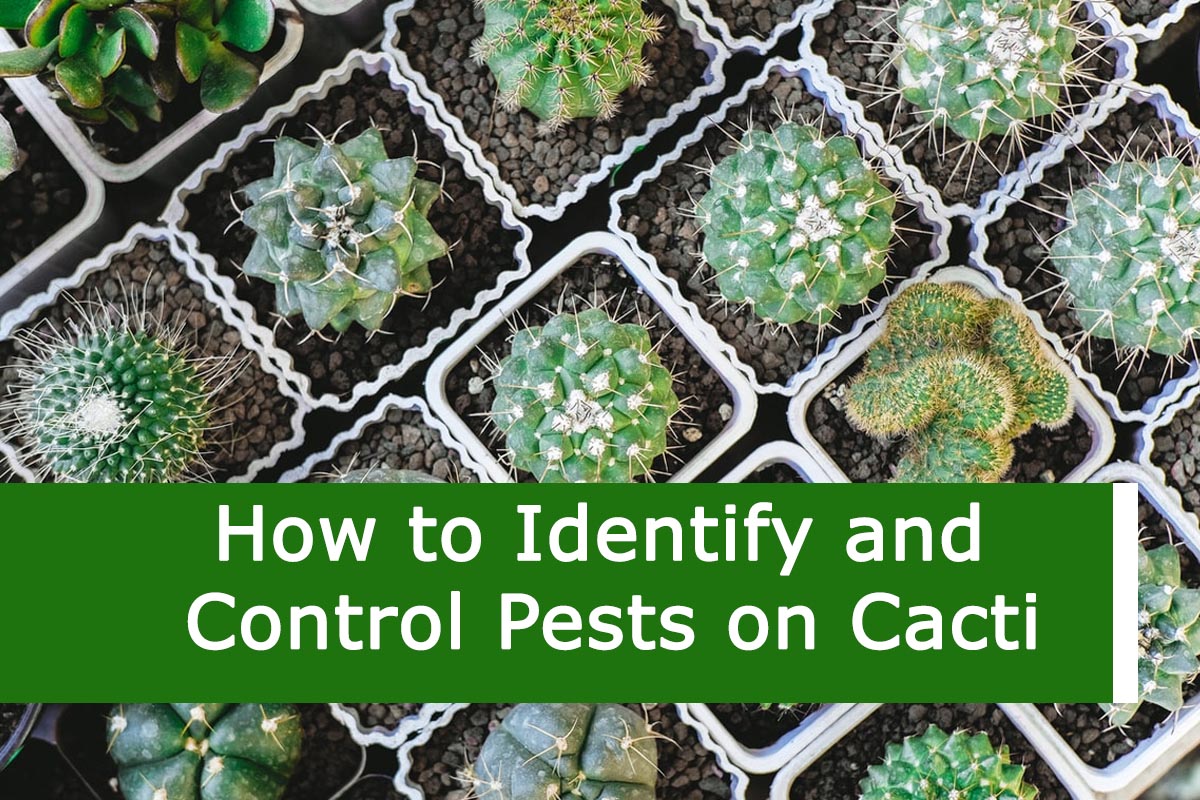
How to Identify and Control Pests on Cacti
Cacti are renowned for their resilience and low maintenance requirements, making them a popular choice among plant enthusiasts. However, like any other plant, cacti can fall victim to pests that threaten their health and appearance. Whether you’re a seasoned cactus collector or just starting with these intriguing plants, it’s essential to know how to identify and control common pests that can wreak havoc on your cacti. In this guide, we’ll explore the most common cactus pests and provide practical solutions for keeping your prickly friends healthy and thriving.
Also Read This : Survival of Cactus & Acacia in Deserts with Scarce Water
Identifying Common Cactus Pests
Before you can effectively control pests on your cacti, you need to be able to identify them. Here are some of the most common culprits:
Spider Mites
These tiny arachnids can be challenging to spot with the naked eye, but they leave behind telltale signs like fine webbing and stippling on cactus pads or stems.
Also Read This : Engaging and Fun Gardening Activities to Inspire Creativity in Kids
Mealybugs
Mealybugs are soft-bodied insects that often appear as small, cottony masses on your cacti. They feed on the plant’s sap, causing damage and weakening it.
Aphids
These small, pear-shaped insects come in various colors and can cluster on cactus pads or stems. They feed on plant fluids and secrete a sticky substance called honeydew, which can attract other pests.
Scale Insects
Scale insects are often mistaken for harmless growths on cacti. They form hard, shell-like covers on the plant and feed on its juices.
Also Read This : Utilizing Coffee Grounds to Boost Plant Growth
Fungus Gnats
These small, flying insects are attracted to moist soil and can lay their eggs in cactus pots. Their larvae feed on the roots, potentially causing damage to the plant.
Controlling Cactus Pests
Now that you can identify these common cactus pests, let’s discuss how to control them effectively:
Inspect Regularly
Before you can manage cactus pests effectively, it’s crucial to identify them. We’ll discuss common pests that target cacti, including spider mites, mealybugs, aphids, and scale insects. Learn to spot the subtle signs of infestations, such as webbing, stippling, and the presence of cottony masses.
Also Read This : Discover the Symbolism Behind 11 Orchid Colors
Early Detection Matters
Early detection is the key to preventing pests from overwhelming your cacti. We’ll explore techniques for regular inspections, emphasizing thorough examination of the undersides of cactus pads and stems where pests often hide. Catching an infestation in its early stages can make control much easier.
Isolate Infected Plants
If you identify a cactus with pests, isolate it from your other plants to prevent the infestation from spreading.
Also Read This : Which Fruits Can Help Control Blood Sugar Levels ?
Pruning
In some cases, you can prune affected parts of the cactus. Be sure to use sterile pruning tools and dispose of the removed sections properly.
Natural Predators
Introducing beneficial insects like ladybugs and lacewings to your cactus garden can provide an effective, natural pest control solution. These predators can help manage aphids and other common cactus pests, reducing the need for chemical treatments.
Neem Oil
Neem cake is a slow-release organic fertilizer with pest-repelling properties. We’ll explain how to use it to deter pests and maintain your cactus’s health. Sprinkle it on the soil surface for ongoing protection.
Also Read This : How to make potting mix for your plants
Insecticidal Soap
Insecticidal soap can be used to control pests like mealybugs and aphids. Be sure to follow the manufacturer’s instructions when applying it.
Neem Cake as a Preventive Measure
Neem cake is a slow-release organic fertilizer that also has pest-repelling properties. Sprinkle it on the soil surface to deter pests.
Quarantine New Additions
When adding new cacti to your collection, it’s vital to quarantine them for a few weeks. This precaution ensures they don’t introduce pests to your existing plants. We’ll provide a step-by-step guide on how to quarantine new additions effectively.
Also Read This : Growing Petunias: Tips for Starting from Seeds, Cuttings, and Purchased Plants
Caring for cacti can be a rewarding experience, but it comes with the responsibility of protecting your plants from common pests. Regular inspections, early detection, and appropriate control measures are essential for maintaining the health and beauty of your cacti. By following the tips in this guide, you can ensure your cactus collection thrives pest-free and continues to bring joy to your home or garden.
Also Read This : Amazing Tips to Maintain our Favorite Cactus at Home




